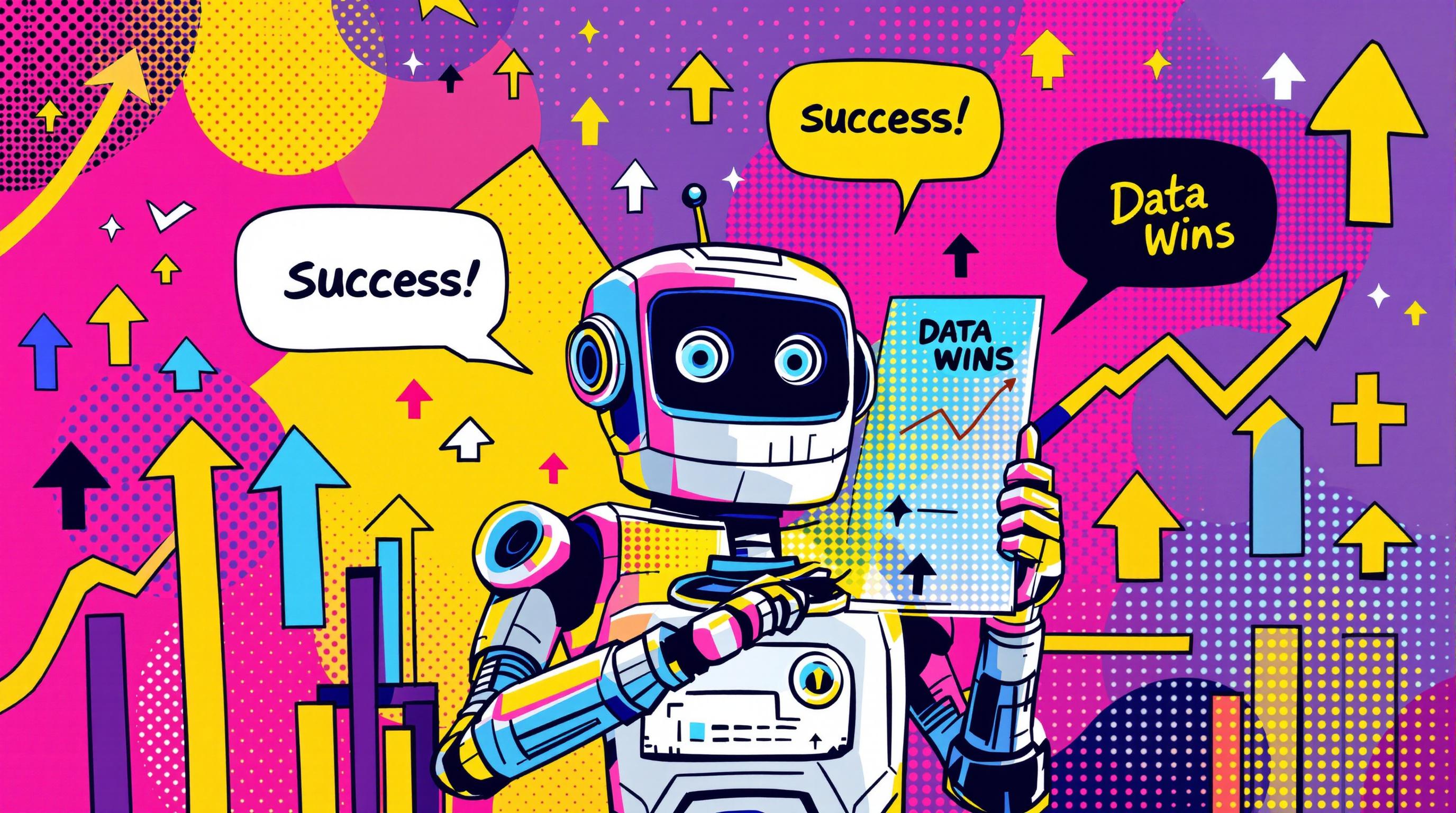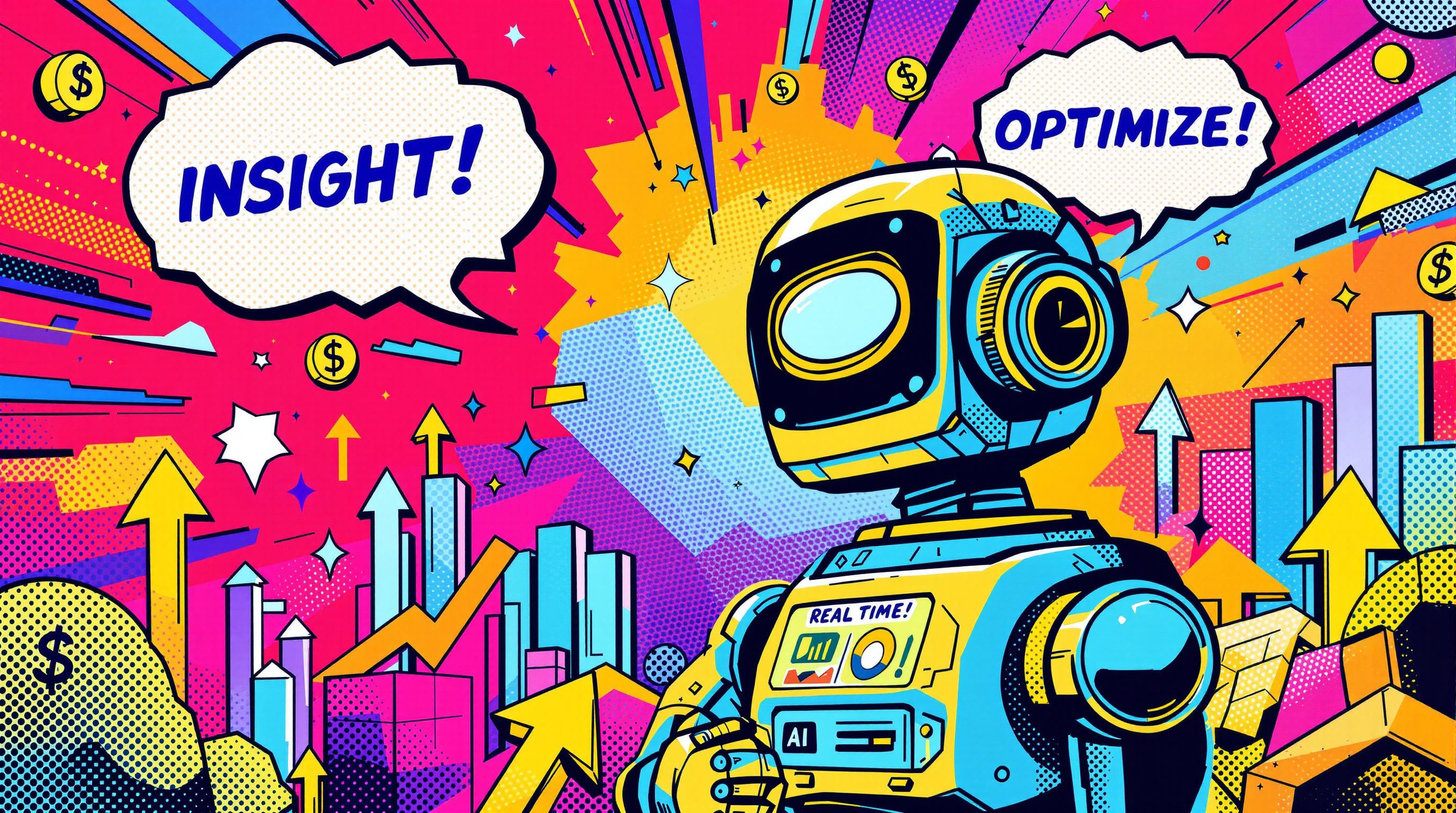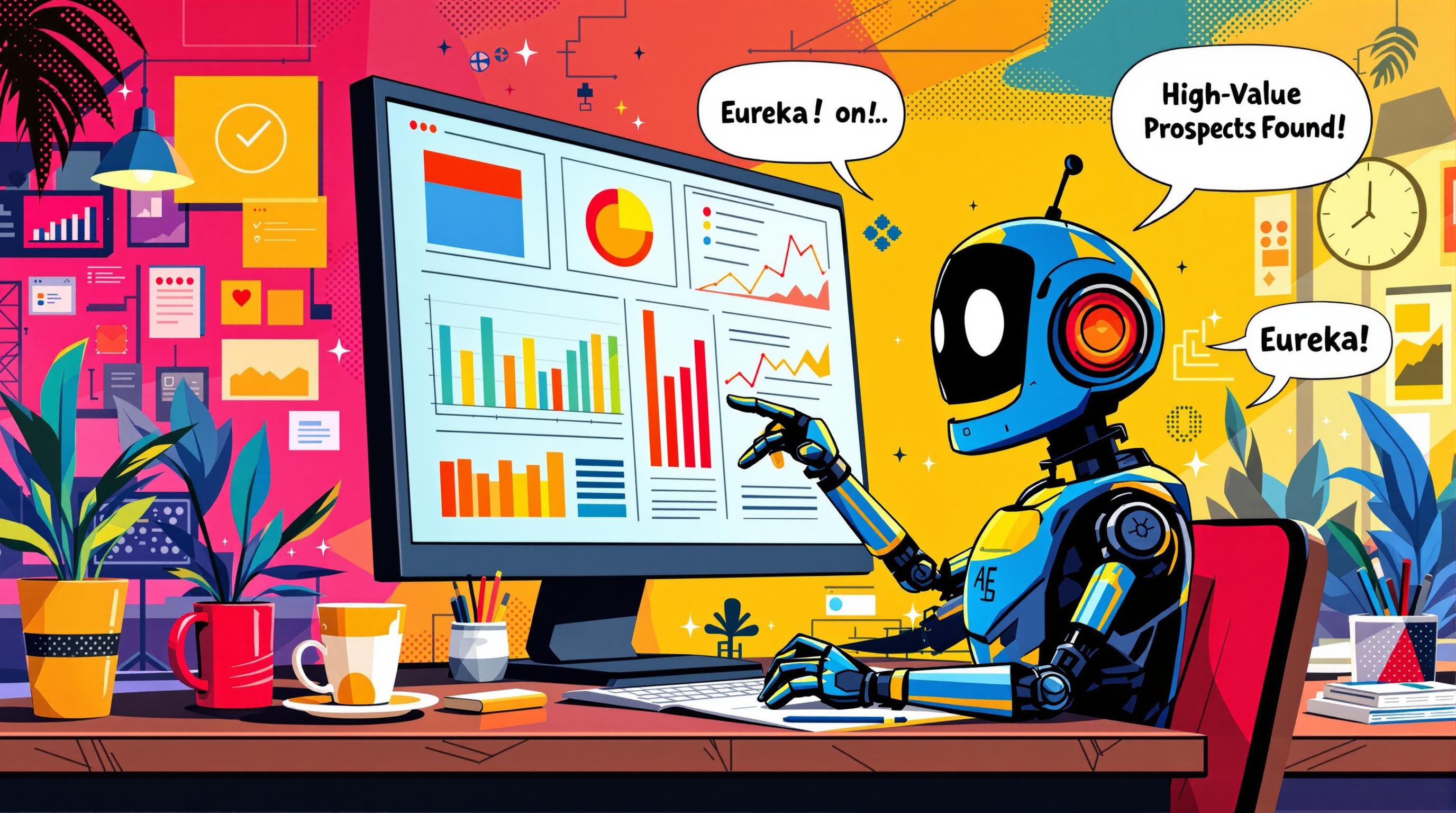Outcome-oriented AI is reshaping marketing by delivering measurable results using advanced tools like machine learning and data analytics. Here’s what you need to know:
- What It Does: AI helps businesses analyze customer behavior, optimize campaigns in real time, and allocate resources efficiently.
- Key Benefits:
- Real-time audience segmentation and content adjustments.
- Smarter ad spending and higher ROI.
- Improved customer satisfaction with faster, personalized interactions.
- Trends for 2025:
- Advanced Personalization: AI creates tailored experiences by analyzing real-time consumer behavior.
- Data-Driven Decisions: Predictive analytics optimize campaigns and improve targeting.
- Multi-Channel Integration: AI unifies platforms for smoother customer journeys.
- Human-AI Collaboration: AI handles repetitive tasks, freeing marketers for strategic and creative roles.
- Challenges: Balancing personalization with privacy and maintaining a human touch in marketing.
Quick Overview:
| Trend | What It Means | Impact |
|---|---|---|
| Advanced Personalization | Real-time, tailored customer experiences | Better engagement and satisfaction |
| Data-Driven Decisions | AI insights to predict behavior and optimize campaigns | Smarter targeting and higher ROI |
| Multi-Channel Integration | Unified data across platforms for seamless customer interactions | Consistent brand messaging and efficiency |
| Human-AI Collaboration | AI takes over repetitive tasks, allowing marketers to focus on creativity | Improved efficiency and innovation |
AI in marketing is not just automating tasks - it’s enabling smarter strategies and driving better results. Start small, focus on measurable goals, and ensure ethical use of AI to stay competitive in 2025 and beyond.
AI Marketing Trends 2025: Unlock These Game-Changing ...
Trend 1: Advanced Customer Personalization
AI is transforming how businesses engage with customers in 2025 by analyzing vast amounts of consumer data to create highly tailored experiences at scale.
Smarter Audience Segmentation
AI now allows marketers to move beyond traditional demographic-based segmentation. By analyzing behavioral patterns, purchase histories, and online interactions, AI creates dynamic audience segments that adjust in real time based on customer behavior.
Here’s how AI-powered segmentation stacks up against traditional methods:
| Aspect | Traditional Method | AI-Powered Approach |
|---|---|---|
| Update Frequency | Monthly/Quarterly | Real-time |
| Data Sources | Limited demographic data | Multi-channel behavior analysis |
| Targeting Accuracy | Basic targeting | Predictive targeting |
| Response Time | Days/Weeks | Instant adjustments |
This real-time segmentation ensures that content and campaigns can immediately adapt to audience needs.
Real-Time Content Adjustments
Zendesk's AI capabilities highlight the benefits of instant adaptation, achieving 30% faster resolutions and higher customer satisfaction scores by two points.
"In today's digital era, where instant gratification is often the expectation, proactive AI engagement ensures that customer service isn't just rapid but also relevant and resonant."
AI is also helping companies recognize and respond to customers' emotional states during interactions. A significant 71% of consumers now expect AI systems to have this capability. For example, Rhythm Energy has successfully used AI to handle 46% of support tickets and cut escalations by 50%.
Balancing Personalization with Privacy
As AI-driven personalization grows, maintaining customer trust is essential. By 2025, 60% of large organizations are expected to use AI for automating GDPR compliance, a sharp rise from 20% in 2023. This reflects heightened consumer concerns about data privacy.
Brett McHale, Founder of Empiric Marketing, emphasizes:
"Although AI usage will surge in 2025, maintaining a human touch remains imperative."
Steps to ensure privacy include implementing privacy-by-design frameworks, advanced data anonymization, transparent communication about data usage, and leveraging federated learning.
The challenge ahead is striking a balance - using AI to create meaningful, personalized experiences while safeguarding customer data and trust.
Trend 2: Data-Driven Marketing Decisions
In 2025, data-driven insights are transforming how marketers approach performance optimization. With AI-powered analytics leading the charge, businesses are making smarter decisions based on detailed data analysis.
Understanding Customer Behavior
AI's predictive capabilities play a key role in helping businesses stay ahead. Brett McHale, Founder of Empiric Marketing, highlights this shift:
"Predictive analytics has become less of a 'trend' and way more of a necessity to remain competitive. I believe this type of AI application will permeate nearly every aspect of business. It is the logical evolution of the 'big data' craze that overtook the 2010's."
AI tools analyze various customer behaviors, such as:
| Behavior Type | AI Analysis Capabilities | Business Impact |
|---|---|---|
| Shopping Habits | Predicting purchase frequency/timing | Better inventory management |
| Channel Preferences | Identifying preferred communication methods | More targeted outreach |
| Engagement Patterns | Analyzing content interactions | Delivery of personalized content |
| Purchase Intent | Tracking behavioral signals | Identifying sales opportunities |
These insights enable real-time campaign adjustments. For example, Meta Ads uses AI to pinpoint users most likely to take specific actions, ensuring campaigns hit their targets.
Enhancing Campaign Performance
Charles Lange explains the importance of flexibility in modern marketing:
"In the rapidly evolving landscape of B2B marketing, the ability to adapt and optimize strategies in real-time is essential for staying competitive."
AI supports this flexibility by automating key tasks, including:
- Adjusting bidding strategies dynamically
- Creating tailored ad variations
- Refining audience targeting without third-party cookies
- Scaling successful campaign elements automatically
Tracking Marketing Results
Measuring success comes down to monitoring the right key performance indicators (KPIs). Industry benchmarks suggest that effective AI tools should help businesses achieve:
- Customer Lifetime Value (CLV) three times higher than acquisition cost
- Retention rates around 67%
- Conversion rates of 2%
- Customer Satisfaction Scores (CSAT) between 75% and 85%
- MQL to SQL conversion rates of 26%
A standout example is Spotify's collaboration with Mailchimp in March 2023. By using Mailchimp's Email Verification API, Spotify cleaned a 45-million-subscriber database and implemented real-time email verification. This reduced bounce rates from 12.3% to 2.1% in just 60 days, improving deliverability by 34% and generating $2.3 million in additional revenue.
Charles Lange emphasizes that features like real-time tracking, automated insights, and A/B testing are essential for refining marketing strategies. These tools ensure businesses continue to improve their AI-driven marketing efforts.
sbb-itb-3fa07bc
Trend 3: Multi-Channel Marketing Integration
With the rise of advanced personalization and data-driven strategies, integrating multiple marketing channels takes things to the next level. By 2025, AI is expected to unify these channels, creating smoother customer experiences while amplifying the effects of earlier personalized efforts.
Cross-Platform Connection
AI now pulls together data from various platforms, simplifying tasks that used to take weeks. By combining data from different sources, AI builds unified customer profiles that marketers can use to refine their strategies.
| Channel Type | AI Integration Benefits | Impact on Marketing |
|---|---|---|
| Social Media | Real-time sentiment analysis | Quick reaction to trends |
| Email Marketing | Behavioral tracking | Tailored follow-ups |
| Search Advertising | Cross-channel attribution | Smarter ad budget allocation |
| Website Analytics | User journey mapping | Improved conversion pathways |
Customer Journey Analysis
AI tools track and analyze interactions across multiple touchpoints, giving businesses a clearer view of the customer journey. Companies using AI for journey analysis report efficiency gains of 10–20%.
"As a digital marketing strategist, I've witnessed firsthand the transformative power of AI agents in our operations. These intelligent tools can analyze consumer behavior with such depth and precision that creating highly targeted campaigns has become our new norm."
For example, Photobucket implemented AI in their customer service operations, which led to a 14% faster response time and a 3% boost in customer satisfaction ratings. This type of analysis not only improves efficiency but also ensures that the brand message remains consistent across all channels.
Brand Message Consistency
As businesses expand their online presence, keeping the brand message consistent becomes even more critical. AI helps achieve this by using predictive engagement strategies. By 2025, AI chatbots are expected to handle up to 85% of customer interactions. Companies like Sephora are already using AI chatbots to create smooth shopping experiences, while Google Ads leverages AI to optimize ad placements for better returns.
Trend 4: Marketer and AI Teamwork
The growing partnership between marketers and AI is reshaping the way teams operate. With AI taking over repetitive tasks, marketers can focus more on strategic planning and creative projects, changing job roles and improving outcomes.
Changes in Marketing Jobs
AI is transforming traditional marketing tasks like manual data analysis and content creation. Instead, roles now emphasize generating insights, overseeing strategies, and fostering creativity. This shift creates space for more impactful decision-making across marketing campaigns.
Learning New AI Skills
As AI becomes an integral part of marketing, developing new skills is key. Marketers should prioritize expertise in these areas:
- Predictive Analytics: Learning to interpret AI-driven insights to turn data into actionable strategies.
- AI Integration: Setting up dedicated teams or councils to manage AI adoption and ensure it aligns with business goals.
- Data Management: Maintaining high-quality data to ensure AI systems work effectively.
"GenAI is poised to revolutionize society, and the decisions we make today will shape the trajectory of innovation, economic prosperity, and societal well-being for the future. Bridging the gap between the current state of GenAI and its future potential is important. Organizations should work to ensure that this powerful technology is harnessed to address global challenges, foster human ingenuity, and create a brighter future for generations to come."
- Steve Fineberg, vice chair and technology sector leader, Deloitte
These technical skills enable marketers to make the most of AI while leveraging their own unique abilities.
Human Skills with AI Support
AI excels at routine tasks, but human creativity and strategic thinking are irreplaceable. Together, they form a powerful partnership, each enhancing the other's strengths.
"The true power of AI lies in its ability to augment human creativity and decision-making, not replace it."
- Derrick Johnson
For instance, 60% of companies using AI for personalization report increased customer satisfaction and revenue. To maximize this collaboration, marketers should:
- Define clear roles for AI and human input in decision-making.
- Implement ethical guidelines to address data privacy and transparency.
- Regularly review AI systems to prevent bias.
- Use AI insights to refine human-led strategies.
As Jensen Huang, CEO of NVIDIA, puts it: "Every company will become a software company, and every software company will need to integrate AI". This shift challenges marketers to combine tech know-how with creative skills, positioning them as leaders in an AI-driven marketing world. By blending human ingenuity with AI precision, teams can achieve the impactful results that matter most.
Conclusion: Next Steps for AI Marketing
AI is transforming marketing by enabling deeper personalization, smarter data usage, and better cross-channel communication. It’s not just a passing trend - AI integration could contribute $15.7 trillion to global GDP, making it a major force for change.
To stay ahead, focus on these key areas:
Lay the Groundwork: Start by reviewing your current content and data systems. Ensure your website uses structured data and that your content aligns with natural language queries. This preparation is essential as AI-first search becomes more common.
Take a Focused Approach: Instead of rushing into full-scale AI adoption, begin with specific, targeted applications. Brett McHale highlights the importance of balance:
"Although 2025 will be a year of increased AI, it has never been more important for each of us to ensure that marketing doesn't lose its human-touch. There is a balance between automation and human creativity. If we forfeit the latter then what does that say about all of us?"
Establish Clear Oversight: Form an AI Council within your organization to guide implementation and ensure alignment with your business goals. This team can help maintain ethical standards while driving innovation.
Measure What Matters: Use small, controlled tests to track the impact of your AI efforts. Companies using AI for personalization report tangible benefits - 60% have seen improvements in both customer satisfaction and revenue. Start with smaller tasks for individual AI tools, then gradually expand to more complex systems.
As Dharmesh Shah, CTO of HubSpot, explains:
"Agents will not only perform individual tasks but also call upon other agents to handle aspects beyond their expertise."
The future of marketing lies in blending AI capabilities with human creativity. By taking thoughtful, strategic steps now, you can build a strong AI foundation while preserving the human touch. Those who strike the right balance between automation and creativity will shape the marketing landscape of 2025 and beyond.



